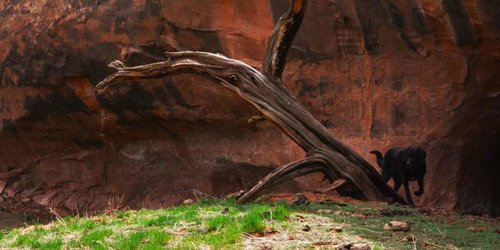One of Theodore Roosevelt's most defining pieces of legislation, and a source of constant irritation for some lawmakers since inception, the Antiquities Act was passed in 1906 and gave broad power in conservation to a sitting President. Given the likelihood of repeal in the next congress (at least in the House), and the conversation related to Bears Ear & Gold Butte, it seemed like an opportune time to put some information out about the act, and most importantly, why TR thought we needed to have it:
The National Park Service has a very good website on the act which is well referenced and contains some good historical information:
https://www.nps.gov/archeology/sites/antiquities/about.htm
From the Theodore Roosevelt Center at Dickinson State University:
http://www.theodorerooseveltcenter....Conservation/The-Antiquities-Act-of-1906.aspx
Here is a somewhat dated list of National Monuments protected by the Antiquities Act:
https://www.npca.org/resources/2658...iquities-act#sm.0001852axu4zqeebzdw2hw9yhn2j1
The National Park Service has a very good website on the act which is well referenced and contains some good historical information:
https://www.nps.gov/archeology/sites/antiquities/about.htm
The Antiquities Act stands as an important achievement in the progress of conservation and preservation efforts in the United States. Its effects are still felt. The Act created the basis for the federal government’s efforts to protect archeological sites from looting and vandalism. It provided a foundation of public policy from which more specific public attention to and preservation of historic places and structures, cultural landscapes, and other cultural resources developed during the course of the 20th century. Today, many different organizations cooperate in diverse partnerships, including governments at the Federal, state, tribal and local levels; professional and scholarly groups; and communities. In shaping public policy to protect a broad array of cultural and natural resources, the impact of the Antiquities Act is unmatched.
From the Theodore Roosevelt Center at Dickinson State University:
http://www.theodorerooseveltcenter....Conservation/The-Antiquities-Act-of-1906.aspx
The Antiquities Act of 1906 was deemed necessary after two decades of looting, desecration, and destruction of Native American sites in the Southwest such as Chaco Canyon and Cliff Palace. The bill was the result of several years’ work by, among others, Representative John F. Lacey and Senator Jonathan P. Dolliver of Iowa (the latter a friend of Theodore Roosevelt) and Representative John F. Shafroth and Senator Thomas M. Patterson of Colorado. On June 8, 1906, President Theodore Roosevelt signed the bill, which had been finally sponsored by Patterson in the Senate and Lacey in the House. The Act for the Preservation of Antiquities (also called the Lacey Act) was an intentionally broad piece of legislation to set aside "historic landmarks, historic and prehistoric structures, and other objects of historic or scientific interest" in order to stop their destruction. As it was worded, either the President or Congress could establish national monuments under the Antiquities Act. Roosevelt quickly took advantage of the authority given him and the wide variety of sites allowed by the bill.
Here is a somewhat dated list of National Monuments protected by the Antiquities Act:
https://www.npca.org/resources/2658...iquities-act#sm.0001852axu4zqeebzdw2hw9yhn2j1





